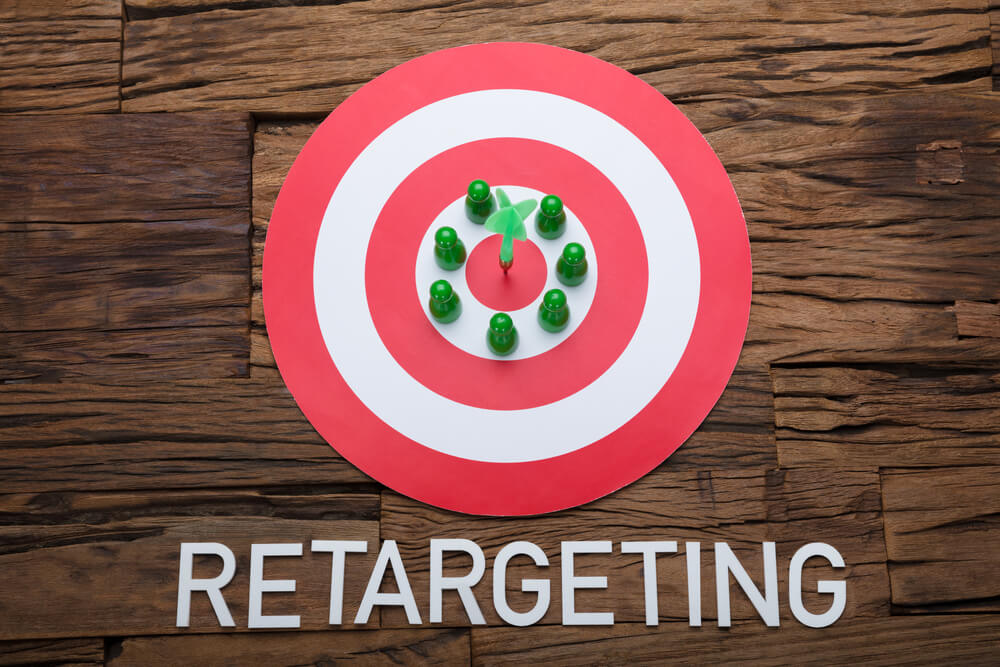
How to Use Retargeting Ads for Your Business
Recently, wine retailer Convive Wines expanded their target market, rolled out online ordering and delivery, and improved their ROI — all during a pandemic! How did they do it? With the help of SharpSpring Ads’ powerful AI. You can check out the full Convive Wines case study for all the details — and get inspired below on how to use retargeting ads for your business to level up your own marketing strategy.
Using Retargeting Ads for Your Business
You may have heard the marketing rule that it takes 6-7 “touches” before someone becomes your customer. In an age of high distraction and choice overload, that’s never been more true. Advertising becomes a numbers game — how many times must you show an ad to someone before they bite? Can you capture their interest each time?
While big brands have the resources to inundate their audiences with ads, small- to medium-sized enterprises (such as Convive Wines) don’t. That’s where retargeting comes in. It’s a way of showing ads that acknowledge someone’s previous activity. This means you show more relevant messages, moving prospects down the funnel and ultimately getting more ROI from your advertising budget.
How Retargeting Ads Work
Retargeting campaigns assume that the target audience has already taken an action that “qualifies” them for your funnel. To use Convive Wines as an example, someone searching online for chardonnay would clearly be interested in their offerings. When they spend time on Convive’s website, that’s a clear indication that they’re a qualified lead.
If they don’t make a purchase or sign up for the Convive Wines mailing list, though, there’s no way for the company to obtain their information. They quickly fade into the depths of the internet. Retargeting fixes that by allowing them to be shown an ad reminding them of the brand. Now, 2 touches have been made — and sent them deeper down Convive’s funnel.
However, a simple reminder isn’t enough. People want to have their problems solved and their desires heard. In this case, you’ve seen that a search for “chardonnay’ brought them to the site. They spent time on the chardonnay category page, then left. Would a retargeting campaign be effective if you show them a generic ad featuring a merlot? Probably not: so the solution is to serve up a chardonnay ad and tap into their tastes — literally!
Retargeting is different from simply building an ad audience, such as asking Facebook to show a campaign to people who are interested in wine and located in the correct area. Retargeting ads specifically follow a previous action and show ads that either (a) remind the lead of that action or (b) tap into their interest with a detailed offering. This is also distinct from remarketing, which uses emails (e.g. abandoned cart reminders) to bring people back into the funnel.
Types of Retargeting
To show relevant ads to prospects, a retargeting service (such as the SharpSpring Ads platform) analyzes data from cookies, which users’ browsers collect whenever they visit your website. You can then serve them ads based on their behavior (e.g. they looked at a certain product but didn’t buy it) or context (e.g. they purchased one product and may be looking for similar items).
There are two types of retargeting:
Static retargeting assumes that each page on your site appeals to a different segment of your audience. You can also link each of those pages to a position in your funnel. For example, someone who spends a few minutes on your chardonnay page but doesn’t make a purchase is a cool lead — and now you know their wine tastes. You can serve them ads designed to capitalize on those interests.
Dynamic retargeting is a bit trickier but well worth the effort if you sell many different products. Amazon has perfected this approach: look at any set of Amazon ads and observe how their recommendations always seem fine-tuned just for you! This style of retargeting compiles each customer’s activities and dynamically generates ads that reflect their interests.
Why Use Retargeting?
It Helps You Cut Through the Noise
Even before COVID struck, people were spending more time online — and being inundated by advertisements and virtual content. When you’re at the top of every funnel, many brands start to look the same to you. Perhaps you’re looking for an online wine retailer but you end up choosing the last one you remember. You’re also accustomed to fast, convenient delivery, so if anything doesn’t offer that, you look for another option.
This is the thought process of many contemporary consumers. They’re not going to do heavy research or track when and where they encountered a certain brand. That’s why it’s crucial to deliver a consistent omnichannel experience that affirms your leads’ interests. Retargeting allows you to stand out in a sea of messages, ads, and websites.
It Improves Conversions
Repetition breeds familiarity which builds trust. One of the main reasons that leads fail to convert is that their objections overcome their initial desire. For example, someone is considering a purchase on an e-commerce site, but then abandons their cart because they aren’t sure if the product meets their needs. Unfortunately, only 3% of web visitors ever return to a website; there’s simply too much noise out there.
A retargeting campaign brings them back into the funnel by exploring benefits and features. If done well, this helps the leads resolve their objections and feel more confident making a purchase.
It Allows You to Target Highly Refined Audiences
When people first encounter your brand, it’s usually because they were searching for solutions. Retargeting allows you to acknowledge that problem and position your offering as their best option. And because they’ve already heard about you, they’re much more likely to give you another pass. In fact, 65% of consumers are more likely to pay attention to ads showing a brand they’ve seen elsewhere.
Most ad audiences need to be fairly broad yet specific enough to generate interest. It can be hard to strike the right balance. That’s why retargeting is so effective; it allows you to (a) connect with leads who discover you organically and/or may never have seen your top-of-funnel ads, and (b) deliver highly focused messages that drive conversions. The goal of retargeting is to make leads feel as though you’re speaking directly to them.
However, this is only possible if you use an ads platform that can track people’s activity on your website, then deliver meaningful ads that reflect their buyer’s journeys. Ideally, the platform connects multiple social channels and ad exchanges. (See how the SharpSpring Ads platform works.)
Retargeting Depends on Good Data
Of course, not all your consumers are made alike. Retargeting needs to tap into their unique interests. The simplest campaigns follow up with someone who visited your website — but don’t assume that means they’re ready to buy. You may need to warm them up a bit more with ads. On the flip side, your visitors may not need a lot of convincing and you simply need to get them back to your site. Either way, you must show them the right messages to inspire their purchases.
Let’s return to the example of Convive Wines as a specialty wine retailer. In their situation, you could develop a retargeting campaign for everyone who visited your website. However, that encompasses a wide variety of interests and contexts, such as:
- Wine drinkers of a specific variety
- Connoisseurs and sommeliers who are looking for rare or high-end brands
- Previous customers who want to try something new
- New shoppers who are passionate about wine and spirits but not yet convinced to buy from your brand
Effective Retargeting Taps Into the Buyers’ Journey
A simple “hey, you left something in your cart!” message often won’t suffice. You need to tap into those buyers’ journeys and send relevant messages, with ads that effectively:
- Show your selection of a certain type of wine
- Highlight your premium wines
- Recommend products related to an earlier purchase
- Explain a unique benefit of your brand (e.g. free delivery)
To send the right messages at the right time, you need an ad management platform that pulls activity data from your website, then correctly interprets it to deliver the campaigns.
Best Practices for Retargeting
Include a call-to-action. The people you’re retargeting move down the funnel (become “warm”) once they engage with your ad. So, go ahead and give them a clear call-to-action. This may or may not be a purchase. It could also be a “sign up for a free trial” or something else, depending on your funnel. However, you’re in a unique position to tap into their brand awareness. Be sure that they are given the next step to take.
Exclude your bounced visitors. When someone visits your site and immediately leaves, that’s a bounce. They’re generally not interested in your offering, so don’t serve them retargeting ads. It’s a waste of your advertising budget.
Keep your ads short, sweet, and solution-oriented. Identify the chief problem your leads are hoping to solve, then make that the highlight of your ad. For example, during COVID, there was heavy demand for online wine delivery. Cut to the chase for your chardonnay-sipping lead: serve them a retargeting ad promoting free doorstep delivery of a good chardonnay.
Send your ads to a dedicated landing page. This is a best practice for all ads but is especially important for retargeting ads. Don’t send leads to a generic homepage where they’ll have to hunt for information. Each campaign should link to a relevant sales page, product page, etc.
Wrapping Up
A good retargeting campaign amplifies your brand and boosts your advertising ROI. It’s especially effective if you’re pivoting your offerings, rolling out a new service, or trying to capture new audience segments. In all these situations, it’s essential to understand your prospects’ buying journey and serve them highly relevant ads.






